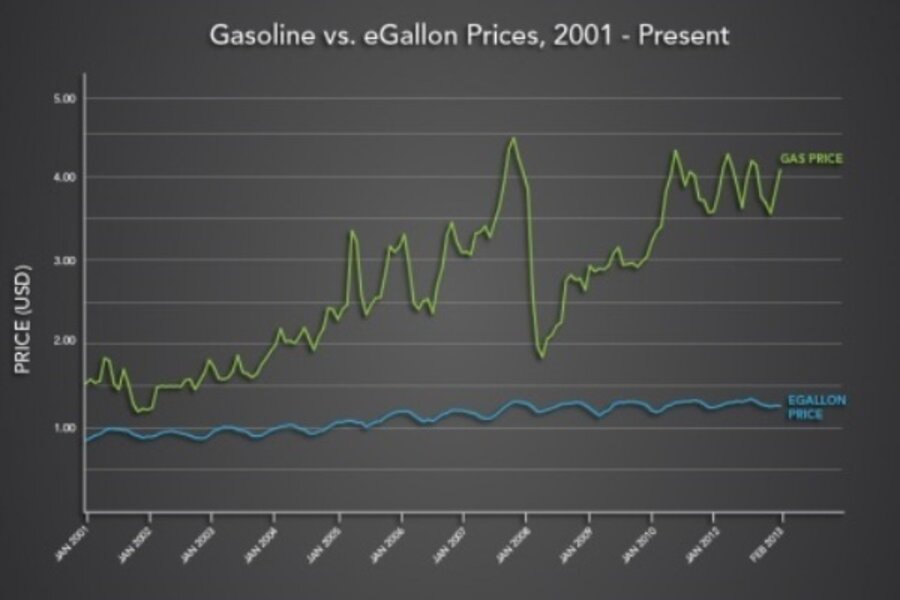eGallon: Find out what it costs drive an electric car
Loading...
It isn't easy to compare gasoline and electric vehicles.
Sure, you can look at EPA stickers, sit in them and appreciate the way they drive, but comparing like-for-like on an economic basis is requires some thought.
The U.S. Department of Energy has simplified the process with its new eGallon calculator, showing potential electric vehicle drivers just how much cheaper it is to run one than the equivalent gasoline vehicle.
The DoE describes an eGallon as "the cost of fueling a vehicle with electricity compared to a similar vehicle that runs on gasoline".
Most people know that the power coming from a plug costs less than the fuel you pour into a car, even if that car will travel further each time you fill it up. But like-for-like, how much cheaper is electricity?
Around three times, is the answer.
The eGallon calculator takes the average miles-per-gallon figure of a new vehicle--28.2 for comparable 2012 model-year cars--and then calculates how much it would cost to drive an electric car the same distance. Simple.
The U.S. average for each is currently $3.65 for a gasoline vehicle, and just $1.14 for an eGallon.
A drop-down box lets you pick your comparison state-by-state, since gas and electricity costs vary around the country.
The DoE's press release also notes something else important when considering the difference in running costs: While the price of an eGallon has remained very similar over the past decade or so, gasoline prices have been incredibly erratic. A gasoline vehicle that seems cheap to run on one day may be incredibly expensive the next--but electric vehicles are largely immune to such fluctuations.
Electric cars have other benefits too, of course, not least those on a macroeconomic scale.
"Instead of spending $1 billion a day on foreign oil," explains Dan Leistikow, Director, Office of Public Affairs at the DoE, "...with electric vehicles and other technologies we can power our cars, homes and businesses with American energy."
Have a play with the eGallon calculator here, and see how little an electric car would cost to run in your state.







